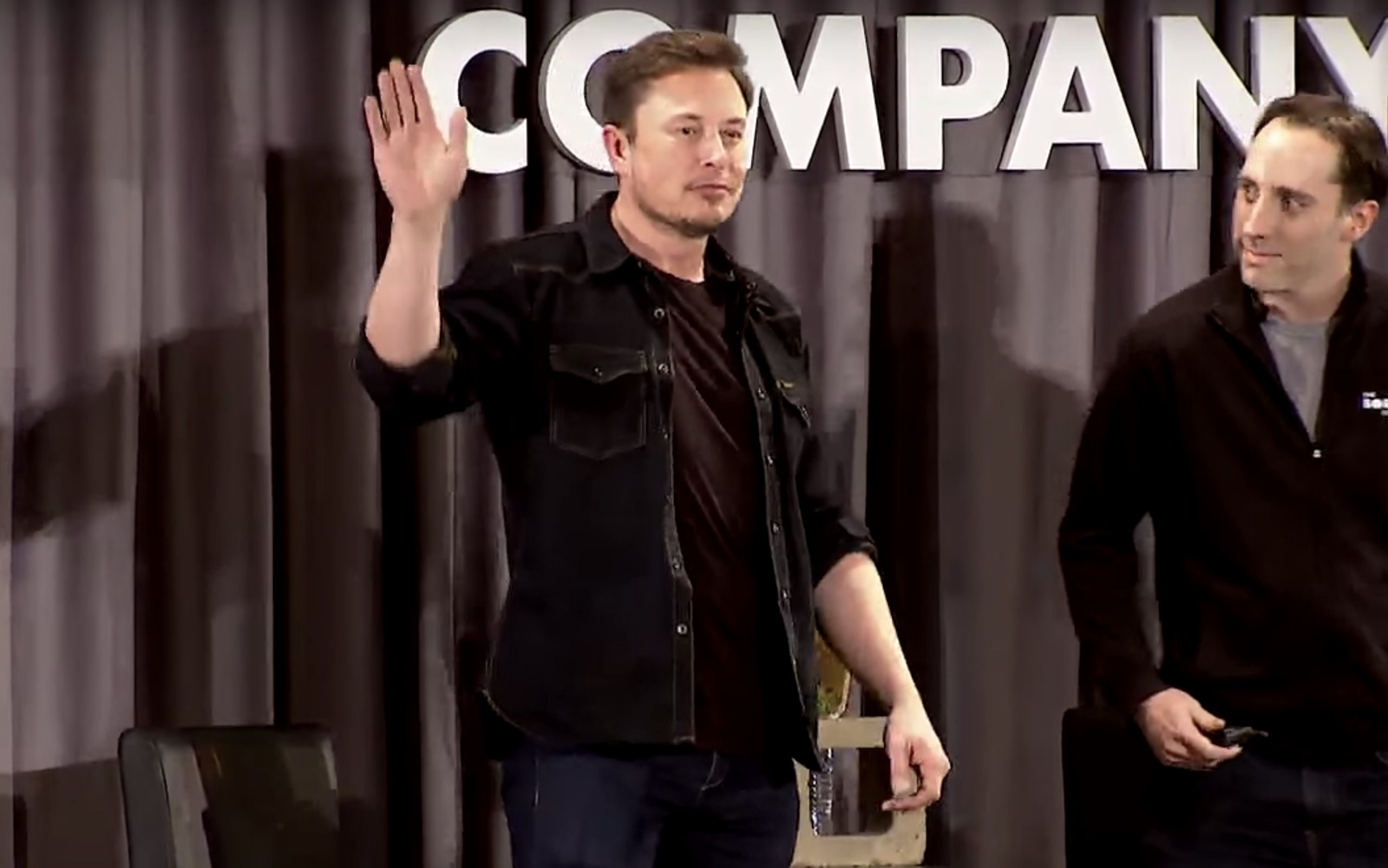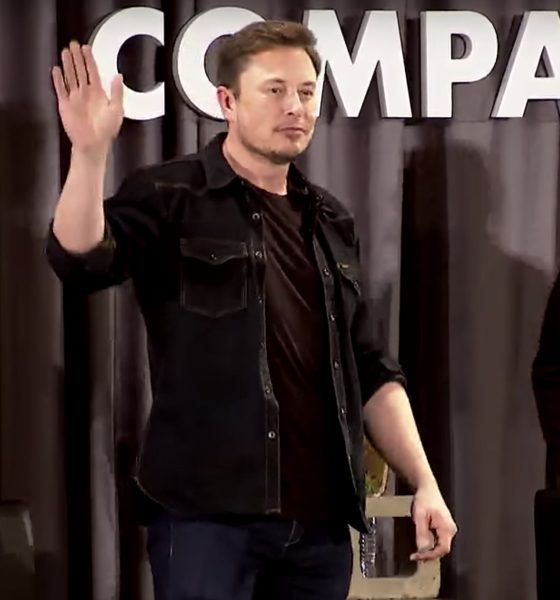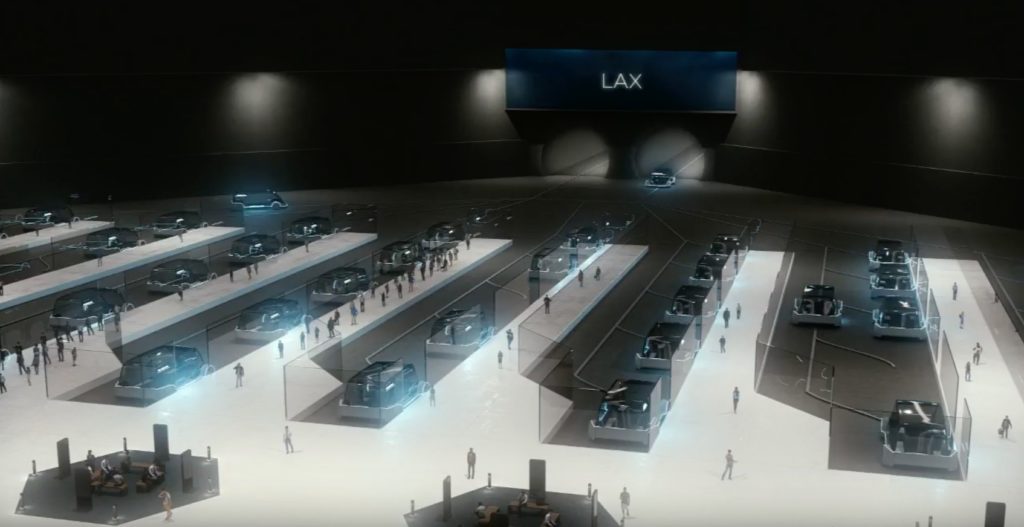

News
Key takeaways from Elon Musk’s Boring Company information session
Elon Musk provided a number of insights about The Boring Company’s Los Angeles tunneling initiatives in an information session held Thursday night at the Leo Baeck Temple. The event was led by Elon Musk and SpaceX Director Steve Davis, who was listed in the company’s recent SEC filing. Here are the key takeaways from information session.
- The Boring Co.’s tunnel boring machines are all-electric, making them 3x as powerful than conventional tunnel boring machines. Tesla batteries are used to power the machines, which eliminates the need for cabling.
- The Boring Company is aiming to drill and lay tunnel walls simultaneously while excavating dirt from the tunnel using battery-electric locomotives, which are equipped with two Model 3 motors.
- Musk and Davis also discussed the Boring Bricks, interlocking bricks made from tunneling rock. Musk noted that the Boring Bricks, which could be used for affordable housing, are better than cinder blocks. Egyptian model kits, featuring designs like the Temple of Horus, will also be sold.
- The Urban Loop transit — electric pods that are designed for commuters — will cost $1 per ticket. The speed of the Urban Loop will be 150 mph, and will enable travel from downtown Los Angeles to LAX airport in 8 minutes. Each pod can carry a maximum of 16 people.
- The Boring Co. tunnels will support Hyperloop technology as well. Just like the Urban Loop’s pods, Hyperloop pods will carry a maximum of 16 people. Hyperloop pods, however, will be much faster, traveling at 700 mph.
- The proof-of-concept tunnel under Sepulveda Blvd. in LA will not be used for public transportation. There will be no street closures, nor any tunneling beneath any homes or businesses. Residents won’t “see, feel, or hear” any of the startup’s activities. Utility lines will be untouched by the project as well.
- The Boring Company will be working closely with LA Metro. Musk stated that overall, “we want to connect with and supplement transport systems” that are already in place.
- Rocket technology is being used to develop and build the Boring Co.’s tunnels, considering that a number of SpaceX engineers are working on the tunneling startup’s projects.
- Line-Storm, the company’s second tunnel boring machine, features improvements over Godot, its first TBM. According to Musk, Godot is a conventional tunnel boring machine. Line-Storm, however, is “essentially a hybrid between conventional boring machine and the Proof-Rock, which is the fully Boring Company-designed machine.” Proof-Rock will be 10-15x faster than current TBMs. Line-storm will be at least 2x faster than a conventional boring machine.
- The Boring Company will do a full Environmental Impact Report. Musk noted that the company does not “expect any issues with the EIR.” Musk, stated, however, that the EIR will likely take some time to do.
- Elon Musk teased a party before the proof-of-concept tunnel’s launch.
The Boring Company came to fruition as Elon Musk’s way of alleviating the “soul-destroying” traffic that is prevalent in America’s streets. Just before the livestream, Elon Musk and LA Metro announced that the Boring Co.’s proof-of-concept tunneling project will be going ahead as planned. A statement from LA Metro reads as follows.
“Metro leadership and CEO Phil Washington had a great meeting today with the talented staff of the Boring Company. They will coordinate with us as they move ahead with their proof-of-concept tunnel under Sepulveda Boulevard to ensure it doesn’t interfere with our Sepulveda Transit Corridor rail project. We’ll be partners moving forward.”
Watch the Boring Company’s information session in the video below.

News
Tesla starts showing how FSD will change lives in Europe
Local officials tested the system on narrow country roads and were impressed by FSD’s smooth, human-like driving, with some calling the service a game-changer for everyday life in areas that are far from urban centers.

Tesla has launched Europe’s first public shuttle service using Full Self-Driving (Supervised) in the rural Eifelkreis Bitburg-Prüm region of Germany, demonstrating how the technology can restore independence and mobility for people who struggle with limited transport options.
Local officials tested the system on narrow country roads and were impressed by FSD’s smooth, human-like driving, with some calling the service a game-changer for everyday life in areas that are far from urban centers.
Officials see real impact on rural residents
Arzfeld Mayor Johannes Kuhl and District Administrator Andreas Kruppert personally tested the Tesla shuttle service. This allowed them to see just how well FSD navigated winding lanes and rural roads confidently. Kruppert said, “Autonomous driving sounds like science fiction to many, but we simply see here that it works totally well in rural regions too.” Kuhl, for his part, also noted that FSD “feels like a very experienced driver.”
The pilot complements the area’s “Citizen Bus” program, which provides on-demand rides for elderly residents who can no longer drive themselves. Tesla Europe shared a video of a demonstration of the service, highlighting how FSD gives people their freedom back, even in places where public transport is not as prevalent.
What the Ministry for Economic Affairs and Transport says
Rhineland-Palatinate’s Minister Daniela Schmitt supported the project, praising the collaboration that made this “first of its kind in Europe” possible. As per the ministry, the rural rollout for the service shows FSD’s potential beyond major cities, and it delivers tangible benefits like grocery runs, doctor visits, and social connections for isolated residents.
“Reliable and flexible mobility is especially vital in rural areas. With the launch of a shuttle service using self-driving vehicles (FSD supervised) by Tesla in the Eifelkreis Bitburg-Prüm, an innovative pilot project is now getting underway that complements local community bus services. It is the first project of its kind in Europe.
“The result is a real gain for rural mobility: greater accessibility, more flexibility and tangible benefits for everyday life. A strong signal for innovation, cooperation and future-oriented mobility beyond urban centers,” the ministry wrote in a LinkedIn post.
News
Tesla China quietly posts Robotaxi-related job listing
Tesla China is currently seeking a Low Voltage Electrical Engineer to work on circuit board design for the company’s autonomous vehicles.

Tesla has posted a new job listing in Shanghai explicitly tied to its Robotaxi program, fueling speculation that the company is preparing to launch its dedicated autonomous ride-hailing service in China.
As noted in the listing, Tesla China is currently seeking a Low Voltage Electrical Engineer to work on circuit board design for the company’s autonomous vehicles.
Robotaxi-specific role
The listing, which was shared on social media platform X by industry watcher @tslaming, suggested that Tesla China is looking to fill the role urgently. The job listing itself specifically mentions that the person hired for the role will be working on the Low Voltage Hardware team, which would design the circuit boards that would serve as the nervous system of the Robotaxi.
Key tasks for the role, as indicated in the job listing, include collaboration with PCB layout, firmware, mechanical, program management, and validation teams, among other responsibilities. The role is based in Shanghai.
China Robotaxi launch
China represents a massive potential market for robotaxis, with its dense urban centers and supportive policies in select cities. Tesla has limited permission to roll out FSD in the country, though despite this, its vehicles have been hailed as among the best in the market when it comes to autonomous features. So far, at least, it appears that China supports Tesla’s FSD and Robotaxi rollout.
This was hinted at in November, when Tesla brought the Cybercab to the 8th China International Import Expo (CIIE) in Shanghai, marking the first time that the autonomous two-seater was brought to the Asia-Pacific region. The vehicle, despite not having a release date in China, received a significant amount of interest among the event’s attendees.
Elon Musk
Elon Musk and Tesla AI Director share insights after empty driver seat Robotaxi rides
The executives’ unoccupied tests hint at the rapid progress of Tesla’s unsupervised Robotaxi efforts.

Tesla CEO Elon Musk and AI Director Ashok Elluswamy celebrated Christmas Eve by sharing personal experiences with Robotaxi vehicles that had no safety monitor or occupant in the driver’s seat. Musk described the system’s “perfect driving” around Austin, while Elluswamy posted video from the back seat, calling it “an amazing experience.”
The executives’ unoccupied tests hint at the rapid progress of Tesla’s unsupervised Robotaxi efforts.
Elon and Ashok’s firsthand Robotaxi insights
Prior to Musk and the Tesla AI Director’s posts, sightings of unmanned Teslas navigating public roads were widely shared on social media. One such vehicle was spotted in Austin, Texas, which Elon Musk acknowleged by stating that “Testing is underway with no occupants in the car.”
Based on his Christmas Eve post, Musk seemed to have tested an unmanned Tesla himself. “A Tesla with no safety monitor in the car and me sitting in the passenger seat took me all around Austin on Sunday with perfect driving,” Musk wrote in his post.
Elluswamy responded with a 2-minute video showing himself in the rear of an unmanned Tesla. The video featured the vehicle’s empty front seats, as well as its smooth handling through real-world traffic. He captioned his video with the words, “It’s an amazing experience!”
Towards Unsupervised operations
During an xAI Hackathon earlier this month, Elon Musk mentioned that Tesla owed be removing Safety Monitors from its Robotaxis in Austin in just three weeks. “Unsupervised is pretty much solved at this point. So there will be Tesla Robotaxis operating in Austin with no one in them. Not even anyone in the passenger seat in about three weeks,” he said. Musk echoed similar estimates at the 2025 Annual Shareholder Meeting and the Q3 2025 earnings call.
Considering the insights that were posted Musk and Elluswamy, it does appear that Tesla is working hard towards operating its Robotaxis with no safety monitors. This is quite impressive considering that the service was launched just earlier this year.










